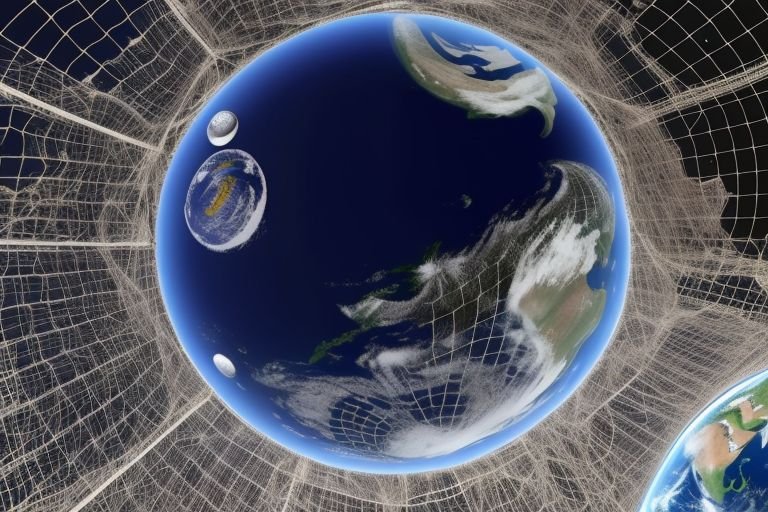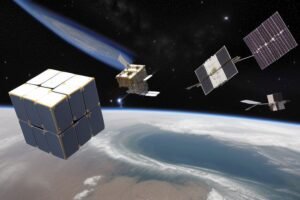In a proactive response to the escalating issue of space debris, a global coalition of space agencies, including NASA, ESA (European Space Agency), and ROSCOSMOS, has unveiled a collaborative effort to tackle this challenge using innovative net technology. This initiative marks a significant step forward in addressing the growing problem of orbital debris, which poses a risk to satellites, space missions, and the safety of astronauts.
Understanding the Space Debris Problem
Space debris, or ‘space junk,’ consists of defunct satellites, spent rocket stages, and fragments from disintegration, erosion, and collisions. According to the ESA, there are currently over 900,000 pieces of debris larger than 1 cm orbiting Earth, each capable of causing significant damage to operational spacecraft.
The Innovative Net Technology
The core of this new initiative is the development and deployment of a specially designed net technology aimed at safely capturing and removing space debris. This technology involves deploying a net to ensnare pieces of debris, which are then dragged down to burn up in Earth’s atmosphere.
Key Features of the Net Technology
- Scalability: The nets are designed to capture debris of various sizes, from small fragments to larger defunct satellites.
- Safety: The nets are engineered to minimize the risk of breaking the target debris into smaller pieces, which could exacerbate the space junk problem.
- Efficiency: This method allows for the removal of multiple pieces of debris on a single mission, making it a cost-effective solution compared to other debris removal technologies.
Collaborative Efforts and Technology Development
This initiative is the result of years of research and collaboration among the world’s leading space agencies, showcasing a unified approach to a global challenge. Development has included extensive simulations and tests to ensure the effectiveness and safety of the net technology in the harsh environment of space.
- International Collaboration: The project represents a significant partnership across countries and agencies, highlighting the global nature of space exploration challenges.
- Technical Innovation: Researchers and engineers from various countries have contributed to refining the net technology, including testing different materials and deployment mechanisms.
Implications for Future Space Operations
The successful deployment of net technology to tackle space debris has broad implications for future space operations:
- Enhanced Safety: Reducing space debris will significantly decrease the risk of collisions with operational spacecraft and satellites, enhancing the safety of orbits for current and future missions.
- Sustainability of Space Environment: This initiative is a crucial step towards the long-term sustainability of space operations, ensuring that future generations can continue to benefit from space-based technologies.
- Regulatory and Policy Development: The collaboration could also drive the development of international regulations and policies regarding space debris and space traffic management.
Challenges and Future Prospects
While the net technology presents a promising solution, there are several challenges to its widespread implementation:
- Technical Challenges: Capturing and safely de-orbiting space debris involves complex trajectory calculations and precise maneuvering in space.
- Funding and Resources: Sustained funding is necessary to support the missions, especially as the technology scales up for regular use.
- International Cooperation: Continued international cooperation is crucial, as space debris is a problem that affects all nations involved in space activities.
The global coalition’s initiative to use innovative net technology to tackle space debris is a pioneering approach to solving one of the most pressing issues facing the space community today. By enhancing the safety and sustainability of space operations, this technology not only protects valuable satellite assets but also paves the way for safer and more efficient space exploration in the future. As the project moves forward, it serves as a testament to the power of international collaboration in advancing our capabilities and safeguarding our shared space environment.




















+ There are no comments
Add yours